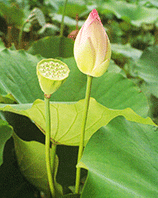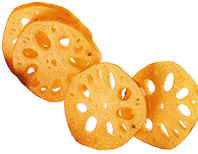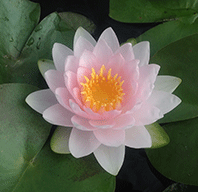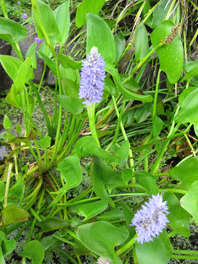| Organic Seeds | Edible Plants | Organic Pest Controls | Books | Tools, Propagation & Fertilisers | Sprouting & Microgreens | Poultry Supplies | Specials & Gift Ideas |

Top

We will send an email to this address*
when is next available
* we will use this email address only for this notification and then we will delete it.
 Home
Home
Green Harvest Organic Gardening Supplies is permanently closed as of 5pm on 1-11-2023.
We will not be taking orders by this website, in person, by phone or email. Our display garden and retail shop are closed forever.
Read more...
Phone:07 54357000
Phone calls will only be responded to sporadically and only in reference to orders placed prior to 2-11-2023. All the useful growing and organic pest management research and resources are available on this website for a while still.
 WATERPLANTS - EDIBLE AND BEAUTIFUL © Frances Michaels
WATERPLANTS - EDIBLE AND BEAUTIFUL © Frances MichaelsA water garden will bring a whole range of new life into the garden, from iridescent dragonflies to birds visiting for a quick bath or drink, to frogs taking up permanent residence. A garden seat placed by a pond provides a tranquil spot for the gardener to sit in quiet reflection and enjoy their efforts. Edible water gardens are easy to maintain and can produce a range of abundant root and leaf crops, which will add both nutrition and excitement to meals. There is a range of edible waterplants suitable to be grown in either an urban garden with a small pond or a rural property with large dams.
ADVANTAGES OF WATER GARDENS
Water gardens are low maintenance, as usually watering, weeding or mulching are not required. It will improve the pest balance as it attracts birds and beneficial creatures such as frogs and dragonflies to the garden. The microclimate effect, of raising the humidity of the air around the pond, can be useful to improve pollination of subtropical plants such as custard apples and pawpaws. The plants themselves are very ornamental.
PROTECTION
Unfortunately it is not just us that enjoy eating waterchestnuts etc, so do a range of wildlife especially water hens syn. swamp hens. If you have these living nearby it will be necessary to protect your waterplants with chicken wire. Herons, kookaburras etc are all happy to eat any fish or yabbies your pond is stocked with so a protective cover is usually needed.
DAMS AND LARGE PONDS
To grow productive waterplants, ponds and dams need to be built with a wide shelf around the edge, with the soil surface 10 cm below the water level. During construction this wide shelf needs to be back-filled with quality topsoil. It is a waste of time trying to grow waterplants in the steep, subsoil sides of the average Australian dam. It is difficult to grow edible waterplants without a stable water level throughout the growing season so generally spring-fed dams are best. Certain waterplants can be quite aggressive in growth habit; some of the world's most aggressive weeds are waterplants. Never remove a pretty flowering waterplant from a friend's pond or dam without identifying it first, as Water Hyacinth, Water Lettuce etc are serious pests that can be very difficult to control and attract large fines. Sacred Lotus is a beautiful, edible waterplant, native to the Northern Territory but it can spread rapidly if planted in a dam and take most of it over. It is better planted in a large container in a pond, where it can be managed.
CONTAINERS
A pond isn't necessary for all water-plants, waterchestnuts and arrowhead are actually grown more successfully in concrete laundry tubs, bathtubs and large, wide, decorative containers without drainage holes. A tractor tyre can be recycled and turned into a tyre pond by digging a hole, lining it with a durable plastic to level with the top of the tyre and then edging it with rocks.
SITING
All water gardens must be sited in full sun. A low point on the site looks more natural.
REQUIREMENTS
To reduce water use it is important to have a really waterproof container. Old bathtubs can have a plug siliconed-in to prevent leakage. Other ponds require a waterproof lining, preferably long lasting. Butyl rubber does not break down under ultraviolet light, whereas all the plastics do. Concrete is the most versatile material.
POND ECOLOGY
A healthy pond is a balanced ecosystem where each occupant depends on the others for survival. The ecology of ponds depends on temperature, the amount of oxygen dissolved in the water, light penetration and nutrient content. Avoid excessive amounts of nutrient entering the system, as this promotes rapid plant growth, especially of algae. When these plants die, all the oxygen is used up. Oxygen helps maintain the proper water temperature and underwater animal life. Management includes never overstocking the pond with fish, not overfeeding the fish and preventing nutrient rich run-off from entering the pond. Waterplants provide food and spawning areas for fish and keep algae in check. Useful plants include: Vallisneria spiralis Tape Grass has long ribbon-like leaves, Myriophyllum spp Water Milfoil has fine, feathery dark green leaves, it suspends itself in the water, so doesn't need potting, Azolla spp a floating water fern, fixes nitrogen. Waterlilies are not just ornamental but serve a practical function as well, the lily pads keep oxygen in the water by trapping it underneath their leaves. Only small quantities of plants are needed, regular maintenance should be removal of excess water plants, as they should never cover more than 50% of the pond surface. Regular maintenance will include topping up the pond, plants and fish prefer mature water so do not empty the natural balance; fish and water snails clean up rotting vegetation and algae. A potential mosquito problem can be avoided by stocking the pond with blue-eyes, a small native fish that thrives on mosquito larvae. Avoid introducing goldfish as; although they eat mosquito larvae they will also eat tadpoles. Creating habitat for frogs should be an important design feature when building ponds.
SUITABLE POTS AND SOIL MIX
Choose wide shallow pots. These will be hidden under the water so any appropriate recycled container can be used. For large plants like Sacred Lotus an old plastic clothes-basket can be used. Make a soil mix by combining good garden soil and potting mix 50:50, fill the pot to a depth of 10 cm. To fertilise take about a cupful of solid clay and mix in a couple of teaspoonfuls of complete fertiliser, roll into balls and bury in the pot. After planting add a layer of gravel on top as mulch to keep the water clean and the soil mix and the plant from floating out. Use bricks or upturned terracotta pots to position the plant at the correct depth under the water.
WATERPLANTS SUITABLE FOR PLANTING INTO POTS AND PLACING IN PONDS
Watercress Nasturtium officinale available as seed or plants are available October to February.
Water Spinach syn Ung Tsoi syn Kangkong Ipomoea aquatica available as seed
Hardy Waterlilies Nymphaea species buy if available
Pickerel Rush Pontederia cordata buy if available
Sacred Lotus syn. Chinese Lotus Nelumbo nucifera
WATERPLANTS SUITABLE FOR GROWING DIRECTLY IN BATHTUBS, ETC
All these edible waterplants produce a root crop and so need plenty of room and good quality, fertile soil to grow in. It is best to think of them as bog plants or edge plants rather than waterplants. Recycling an old bathtub, laundry tub or children's paddling pool is more successful than planting in pots. A rich, sandy, well-limed loam with a pH of 6.5 to 7.2 is needed. Well-composted animal manures or other organic fertilisers can be used to improve fertility.
Chinese Waterchestnut Eleocharis dulcis buy if available
Arrowhead syn. Duck Potatoes syn. Kuwai Sagittaria sagittifolia buy if available
Taro syn. Cocoyam syn. Dasheen Colocasia esculenta buy if available
Tannia syn. Tanier syn. Cocoyam syn. Yautia Xanthosoma sagittifolium
Water Celery Oenanthe javanica buy if available
DETAILED GROWING INFORMATION
 Sacred Lotus Nelumbo nucifera
Sacred Lotus Nelumbo nuciferaPlant Description: A herbaceous, perennial rhizome that grows 1-1.5 m tall. Large circular leaves are produced on long stems. Flowers are very beautiful, white or pink. In a dam, in a warm climate they are likely to be invasive.
Uses: Most parts of the lotus are edible; the leaves are used to wrap steamed food, or when young eaten as a green vegetable, the tuberous roots are used in stir-fry, the flower petals are floated in soup or tossed in salads and the seeds are roasted.
 Growing Requirements: Lotus needs a rich soil, a long growing season in
a warm climate and full sun. They are hardy once established but need care and warm growing conditions
to get them started. Choose a wide shallow pot, min. 33 cm x 23 cm, is best, for larger ponds an old
plastic clothesbasket can be used. Mix a heavy loamy garden soil and potting mix 50:50, fill the pot
to a depth of 10 cm. When the tuber arrives it should be semi-dormant. Handle the tuber carefully so
you do not break off the growing tip, called an 'eye'. The 'eye' is described as the part of the tuber
where the leaves will grow from. You should be able to detect a spot on the tuber where leaves, not
roots, were once growing. This 'eye' must not be covered with either soil or gravel. Lay the tuber
horizontally on the soil with the 'eye' sticking up so it will protrude from the soil and gravel. Cover
the rest of the plant with soil. After planting add a layer of gravel on top as mulch to keep the water
clean and the soil mix and the plant from floating out. A couple of flat rocks might be needed as well
to reduce buoyancy. Place the pot just under the water surface until the plant has sprouted, as it is
warmer closer to the surface. Gradually lower it over the next few weeks until it is covered with
between 10-23 cm of water over the pot.
Growing Requirements: Lotus needs a rich soil, a long growing season in
a warm climate and full sun. They are hardy once established but need care and warm growing conditions
to get them started. Choose a wide shallow pot, min. 33 cm x 23 cm, is best, for larger ponds an old
plastic clothesbasket can be used. Mix a heavy loamy garden soil and potting mix 50:50, fill the pot
to a depth of 10 cm. When the tuber arrives it should be semi-dormant. Handle the tuber carefully so
you do not break off the growing tip, called an 'eye'. The 'eye' is described as the part of the tuber
where the leaves will grow from. You should be able to detect a spot on the tuber where leaves, not
roots, were once growing. This 'eye' must not be covered with either soil or gravel. Lay the tuber
horizontally on the soil with the 'eye' sticking up so it will protrude from the soil and gravel. Cover
the rest of the plant with soil. After planting add a layer of gravel on top as mulch to keep the water
clean and the soil mix and the plant from floating out. A couple of flat rocks might be needed as well
to reduce buoyancy. Place the pot just under the water surface until the plant has sprouted, as it is
warmer closer to the surface. Gradually lower it over the next few weeks until it is covered with
between 10-23 cm of water over the pot.Buy sacred lotus if available
 Hardy Waterlilies Nymphaea species
Hardy Waterlilies Nymphaea speciesPlant Description: A beautiful addition to any garden pond, waterlilies can be grown in a tub on the patio or in ponds of any size. They grow from tubers planted in pots beneath the water and send up stems with rounded leaves and star-shaped blossoms that float on the surface. They bloom in the morning and close after sunset, lasting three or four days before sinking beneath the surface. The flowers appear from spring to autumn. Hardy water lilies go dormant in winter and may be left in the water or stored.
Growing Requirements: Planting in full sun is important with a minimum water depth of 30-45 cm. Use a pot or container that is wide and shallow. A good size is 30 cm x 45 cm wide by 15 cm deep. If there are drainage holes, line the pot with hessian to keep the soil in the container. The rhizome grows horizontally across the container so start it at one edge of the container. The rhizome is planted at an angle of about 45 degrees with the crown exposed and pointing toward the centre of the pot. After planting top with a mulch of gravel. The plant can be lowered to a depth of 15 cm to begin with, and then lowered to a depth of 30 - 45 cm as the plant grows. The planted pot should be lowered into the pond at an angle to allow air to escape. Regular fertilising throughout the growing season will ensure blooming.
Buy waterlilies if available
 Pickerel Rush Pontederia cordata
Pickerel Rush Pontederia cordataPlant Description: A perennial pond plant with glossy green leaves and spikes of attractive blue flowers in summer. Pickerel rush is very hardy and easy to grow so long as it does not dry out. The hyacinth-like flowers continue to bloom through the summer. Pickerel rush provides nectar for bees and butterflies and habitat for frogs. It is a beautiful addition to any water garden.
Uses: The nutritious, starchy seed can be eaten straight from the plant or dried and added to cereals, it tastes a bit like puffed brown rice. The seeds can also be dried for storage, then boiled, or roasted to improve the flavour or ground into flour. The young leaf-stalks can be cooked as greens or eaten raw in salads.
Growing Requirements: This emergent aquatic grows in shallow water or as a bog plant. Plant in a shallow container in full sun, in up to 20 cm depth of water. Use a heavy loamy garden soil and potting mix 50:50, fill the pot to a depth of 10 cm. After planting, top with a layer of gravel mulch. Regularly divide the plant to keep it from growing too large.
Buy pickerel rush if available
Not to NORFOLK ISLAND, NT, SA, TAS or WA
SORRY but due to quarantine restrictions between Australian States no plants at all can be ordered by residents of Norfolk Island, Tasmania and Western Australia. These restrictions are very important as they prevent the spread of plant pests and diseases. No potatoes, garlic, shallots, strawberries or tubestock can be sent to South Australia. No tubestock can be sent to Northern Territory.
 Home
Home
Green Harvest Organic Gardening Supplies is permanently closed as of 5pm on 1-11-2023.
We will not be taking orders by this website, in person, by phone or email. Our display garden and retail shop are closed forever.
Read more...
Phone:07 54357000
Phone calls will only be responded to sporadically and only in reference to orders placed prior to 2-11-2023. All the useful growing and organic pest management research and resources are available on this website for a while still.
DISCLAIMER:
No liability will be accepted by Green Harvest, its owners or employees as to the accuracy of any information. No responsibility will be taken for damage to property or persons due to information given about a product or technique. No responsibility will be taken for the loss of a crop or income due to information given about a product or technique.
 Shopping here is private and secure.
Shopping here is private and secure.
Copyright © 2001 - 2024 Green Harvest Organic Gardening Supplies
No part of this website may be reproduced without permission of the owner
SORRY but due to quarantine restrictions between Australian States no plants at all can be ordered by residents of Norfolk Island, Tasmania and Western Australia. These restrictions are very important as they prevent the spread of plant pests and diseases. No potatoes, garlic, shallots, strawberries or tubestock can be sent to South Australia. No tubestock can be sent to Northern Territory.
 Home
Home
Green Harvest Organic Gardening Supplies is permanently closed as of 5pm on 1-11-2023.
We will not be taking orders by this website, in person, by phone or email. Our display garden and retail shop are closed forever.
Read more...
Phone:07 54357000
Phone calls will only be responded to sporadically and only in reference to orders placed prior to 2-11-2023. All the useful growing and organic pest management research and resources are available on this website for a while still.
No liability will be accepted by Green Harvest, its owners or employees as to the accuracy of any information. No responsibility will be taken for damage to property or persons due to information given about a product or technique. No responsibility will be taken for the loss of a crop or income due to information given about a product or technique.
 Shopping here is private and secure.
Shopping here is private and secure.
Copyright © 2001 - 2024 Green Harvest Organic Gardening Supplies
No part of this website may be reproduced without permission of the owner